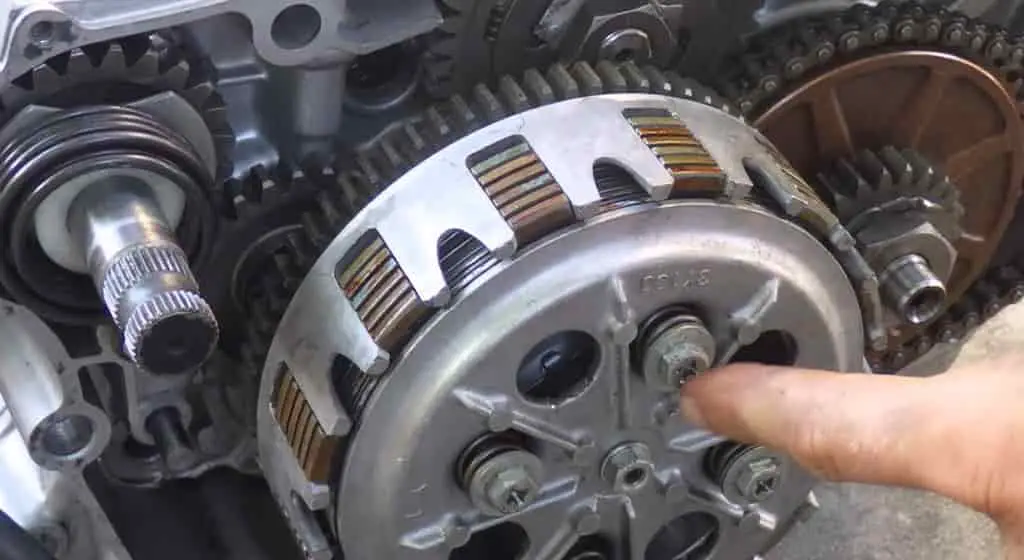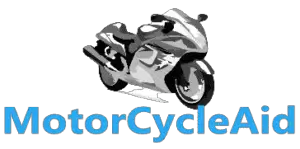
If you have driven a car with a manual transmission before, you are sure to be familiar with what it is like to operate the clutch. The third pedal must be pressed in order for you to be able to shift gears.
If you are used to driving only automatic transmission cars, however, you might not be fully aware of the clutch that is in the vehicle and wonder why there is a clutch in the car in the first place. So let us learn about the importance of a clutch in any vehicle through this article.
Clutch in a Motorcycle
An engine clutch is a component that transfers power from the crankshaft, the engine’s main power source, to the gearbox, which is the gearbox itself. Clutches are devices that allow you to shift gears at the push of a button. Basically, it controls the amount of power going to the back wheel by switching it on or off.
Clutch assemblies consist of the following components:-
- clutch plate,
- clutch basket,
- clutch hub,
- pressure plates,
- clutch springs,
- a lever, and
- a clutch cable,
With constant pressure and rotational twists, the clutch release bearing will build up excessive heat. As time passes, the friction material burns off and the clutch release bearing seizes and collapses, which results in the clutch disengaging.
Role of a Clutch in a Motorcycle
An automotive clutch plays a crucial role in the transmission of torque those are as mentioned below:-
- The delivery of power from the engine to the transmission.
- The reduction of drive vibrations.
- When we use the clutch, we can temporarily cut power to the rear wheel in order to change the motorcycle’s speed.
- The protection of the drivetrain of a car or bike.
In a vehicle, the clutch provides a link between the engine and the transmission, allowing the vehicle to move. A release bearing is pushed into the center of the diaphragm spring when the clutch is disengaged, releasing the clamping force.
Clutch fails to disengage in Harley Davidson
Possible Causes of Clutch failure to disengage
One of two things is likely to happen if your clutch is not fully engaged or is sliding under a larger load. Therefore, it is typically the consequence of a loose pressure plate from accumulated wear or a worn-out friction disc. When the clutch is depressed, the diaphragm spring presses the friction disc and the flywheel together.
There won’t be enough friction to transmit the engine’s power to the gearbox if the spring pressure isn’t high enough or if the space between the parts is too wide. Without much notice, a clutch might suddenly stop functioning after functioning perfectly before. No amount of pressure will cause the clutch to disengage, allowing the car to shift out of gear.
In addition to friction discs deteriorating, springs also become weaker, and this will cause clutches to slip when the friction discs get worn down. As soon as a slippage occurs without warning, then there is probably an oil leak somewhere in the friction plates or something else that is contaminating them.
Solution of Clutch failure to disengage
There is a possibility that there is some kind of serious damage somewhere in a clutch that won’t engage at all. If the throw-out bearing is seizing, see if there is a bent linkage or if the throw-out bearing is bent.
If those don’t solve the problem, then search for tangles in the chain, corroded cables, or worn-out friction plates in the linkage.
Other possible causes of Clutch failure in Motorcycle
Slipping clutch plates
When the friction disc and the flywheel are not held tightly against each other by the pressure plate during the engagement of the clutch, slippage can occur. The disc rotates at a slower rate than the flywheel, so the disc turns at a different rate than the flywheel.
There is a possibility that small adjustments to clutches that have a mechanical linkage may delay the need for replacement for a few months.
Abnormal vibration
The clutch pedal should feel like the brake or accelerator while using a manual gearbox. It shouldn’t vibrate and should go back and forth without stuttering. There is an issue if you squeeze the clutch and you may feel a vibration with your foot.
A clutch that grabs or shudders is an obvious clue that there is a problem with the clutch mechanism. Acceleration from a dead stop causes the most vibration, as does the release of the clutch with excessive jerking, which may be the reason for the clutch failure.
Transitioning from one gear to another is difficult
The clutch’s function is to disengage the transmission, allowing the driver to shift into a different gear. If you are having problems shifting gears, something is wrong and the clutch isn’t performing its job.
A number of symptoms that are caused by clutch release issues might have a significant impact on driving. The driver won’t be able to shift the automobile from neutral if the clutch won’t fully disengage. Instead, the disc will keep spinning.
When the clutch does not disengage from the flywheel, it is usually the result of an air leak in the hydraulic system or an issue with the linkage.
Maintenance tips regarding the Clutch
Handbrake on a steep location
Frequently, when a vehicle comes to a halt on an incline, many drivers will use the clutch to prevent their vehicle from rolling backward when they come to a halt.
The result of this is that you put a great deal of strain on the clutch and there will be insufficient fuel to proceed forward without jerks when you do so. Rather than applying the handbrake, the brake pedal should be released and the handbrake should be applied.
Avoid pressing the clutch while stopping the vehicle
Applying the clutch and brake pedals at the same time when braking is another egregious example of improper conduct. By transferring the load off of the engine, you are not only utilizing the clutch excessively but also losing a significant amount of braking power.
It is often recommended to use your clutch just before the engine starts to struggle and cut off when braking.
Use neutral while at the halt
When you wait for the signal or on some temporary stoppage, it is not a good idea to put the car in neutral while you press the clutch for ten seconds.

